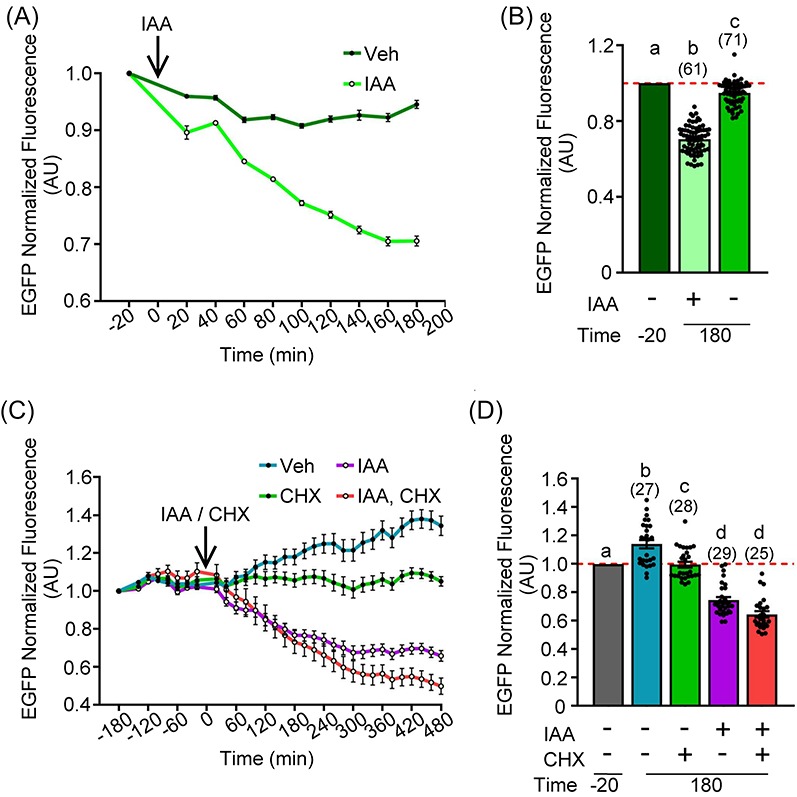Figure 3.

Increasing cRNA expression time or inhibiting translation with cycloheximide has no impact on loss of exogenously expressed AIDm-EGFP. (A, B) Oocytes were injected with 0.4 μg/μl AIDm-EGFP cRNA and 2.0–2.2 μg/μl TIR1-myc cRNA, and allowed to express cRNA for 16 h prior to 500 μM IAA treatment. (A) Graphical representation of EGFP fluorescence over time. 500 μM IAA was added at 0 min (arrow). EGFP fluorescence normalized to expression at −20 min. (B) Graphical comparison of EGFP fluorescence before (−20 min) and after (180 min) IAA addition. EGFP fluorescence was normalized to expression at −20 min (ANOVA with Tukey's post hoc). n = number of oocytes analyzed (61–71 over two technical replicates), P < 0.0001. (C, D) Oocytes were injected with 0.4 μg/μl AIDm-EGFP cRNA and 2.0 μg/μl TIR1-myc cRNA, and allowed to translate protein from the injected cRNA for 6 h prior to 500 μM IAA and/or CHX treatment. (C) Graphical representation of EGFP fluorescence over time. IAA and/or CHX were added at 0 min (arrow). EGFP fluorescence normalized to expression at −180 min. (D) Graphical comparison of EGFP fluorescence before (−20 min) and after (180 min) IAA and/or CHX addition. EGFP fluorescence normalized to expression at −20 min (Kruskal–Wallis test with Dunn's post hoc). n = number of oocytes analyzed (25–29 over two technical replicates), P ≤ 0.0072. Line graphs show mean and SEM of EGFP fluorescence every 20 min. Bar graphs show mean, SEM, and individual oocyte scatter plots.
